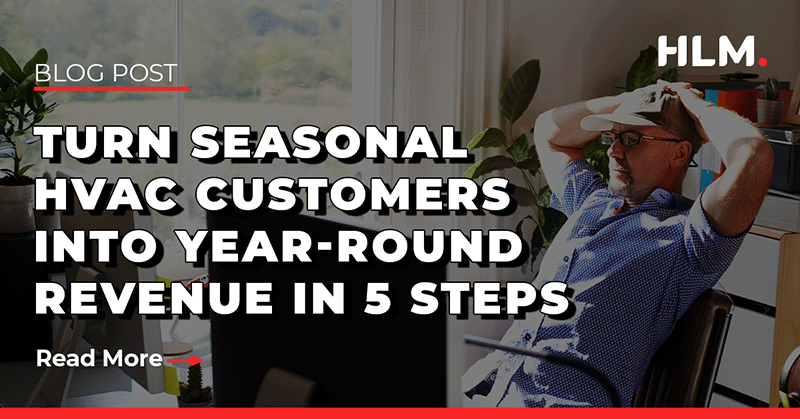![]() By Penny M
Oct 2, 2023 7:41:49 PM
By Penny M
Oct 2, 2023 7:41:49 PM

It would seem comparing your marketing investments based on which method has the lowest cost per lead in any given month and investing more there makes sense. But, you could be making a major mistake that costs you sales.
For example, meet Frank. Frank owns a roofing company. In August, Frank spent the following on a digital marketing program:
- $1,000 on SEO Optimization (Organic) to show up better in local search results
- $1,000 on paid Google Ads
- $1,000 on paid Facebook Ads
In August, according to his CRM (lead tracker), he received the following amount of leads from each source and calculated his cost per lead by dividing the number of leads by the amount spent on that marketing method.
Frank quickly comes to the conclusion he should stop investing in Facebook Ads and put more budget into Google Ads.
Many would agree this was a wise decision by Frank.
Unfortunately, these individuals may find themselves scratching their heads in a couple of months wondering where their volume of leads went, not realizing that their Facebook Ads had a bigger contribution than what showed up in their CRM.
How we wish digital marketing journeys worked
Most think of a simple approach to investing in marketing by the following process:
- Set a budget and invest in a marketing method like Google Ads (PPC).
- Show people great ads and track every person who clicks an ad.
- Within a few minutes of looking at your website, the person fills out a form that gets sent to your email/phone/CRM giving you a new lead.
- You divide the amount you spent by the number of times someone clicked an ad and converted it to identify how much each lead cost you.
Remember Frank, the owner of a roofing company? Now meet Ralph, a potential customer of Frank's.
In a perfect world, here’s how we’d all like everything to go:
- Frank sets his Google Ads (PPC) budget at $1,000.
- Ralph searches on Google for roofers and clicks Frank's ad.
- After a few minutes of viewing some great content on Frank's website, Ralph takes action and fills out a form to get a Free Estimate.
- After Ralph, nine more people do the exact same thing, resulting in 10 total leads from Google Ads. Frank divides his Google Ad spend of $1,000 by 10 leads and gets a cost per lead of $100.
Above is how most believe digital marketing journeys play out. We would then be able to make easy decisions on which marketing method resulted in the lowest cost leads and invest heavily in that marketing method.
The reality of how digital marketing journeys work
While some journeys for potential customers are very simple such as clicking one ad, landing on a page, and filling out a form, many are more complex.
In reality, many customers experience your company and ad campaigns from multiple sources before deciding to act.
This is known as multi-touch attribution. The journeys of potential customers can stretch across multiple experiences with ads and ways of finding your company.
Let’s get back to Ralph and Frank. In reality, here’s how Ralph’s journey could go:
Frank sets his Google Ads (PPC) budget of $1,000 (nothing changed here).
- Ralph searches on Google for roofers and clicks Frank's ad.
- Ralph looks at some great content on Frank's website but decides not to take action right away because he’s not sure he can afford a new roof at this time.
- The good news for Frank is he also has a Facebook Ad campaign running. Later that week Ralph sees Frank's Facebook Ad in his Facebook feed because he is now tracked after going to Frank's website. In the Facebook Ad, Ralph sees the message that Frank’s company offers roof financing.
- After realizing with financing he can afford a new roof, Ralph clicks the Facebook Ad and takes action by filling out a form to get a Free Estimate.
- After Ralph, nine more people have a similar experience, resulting in 10 total leads.
Frank wants to do the math to get his cost per lead, but it starts to get complicated. He takes a look at his leads and the Google and Facebook numbers and realizes:
Frank counts his total leads.
Frank: “10, great.”
Facebook Ad metrics show 10 conversions.
Frank: “That makes sense, I have 10 conversions and 10 leads. And look I see Ralph’s lead source was Facebook.”
Then Frank jumps over to Google Ad metrics and also sees 10 conversions.
Frank: “That can’t be right, if I have 20 conversions, why do I only have 10 leads?”
Frank and most people would think the tracking isn’t set up correctly or there is a bug in the system. When in fact, all systems are reporting accurately.
Which marketing method gets credit for the lead?
Here is the difference between “first source” attribution (credit) and “last source” attribution.
On one hand, you could argue:
If Ralph never clicked the Google Ad, he never would have seen the Facebook Ad and become a lead, so the Google Ad is responsible. This is a “first source” attribution.
On the other hand, you could argue:
The Google Ad may have got Ralph there first, but without the Facebook Ad, Ralph would not have taken action to become a lead, so the Facebook Ad is responsible. This is the “last source” attribution. This is what most CRM (lead tracker) platforms use because people generally want to know what method got someone off the fence to convert into a lead.
The whole situation gets more complicated as people like Ralph may start their journey by clicking on an organic search listing or map listing, then taking action after seeing an ad. Or first clicking on an ad, then getting back to your website by searching organically or going to your website directly.
Identifying the most critical source is like identifying which dish in a five-course meal was the one causing you to eventually feel full. You’d keep coming back to the understanding that everything you ate contributed.
Isn’t it a waste of a click if someone clicks an ad and doesn’t convert?
Absolutely not. This is why companies like Coke and Pepsi are ok running a Super Bowl ad and understanding the benefits to overall sales without worrying everyone who sees the ad won’t immediately go to the store and buy a 12-pack of soda.
The day of the CLICK and the day of the CONVERSION (lead form or call), which can be different, matters.
The day of the click is the day someone clicked your ad. The day of the conversion is the day they called or filled out a form. These are often not on the same day. We always enjoy it when someone is ready to take action the same day, but in most industries, buyers need more time to make a decision.
Getting back to Frank…
On the first day of November, Frank looks back at his October Google Ads conversion numbers and sees he had 12 conversions.
About a week later, Frank looks back at October Google Ads conversion numbers again and sees a new number, he now has 14 conversions. Shaking his fists at the sky, Frank bellows, “That’s not possible to get more conversions in the past! It’s November!”
Platforms like Google Ads and Facebook Ads report conversions based on the time of the ad click, NOT the time someone converted by filling out a form.
This means if someone fills out a form on your website in November, and clicked your ad in October, your October numbers will change in the ad platform’s reporting, even though it is currently November.
In Frank's case above, he could potentially see those 2 new leads in his CRM (lead tracker) in November, look into his Google Ads account and see 0 conversions for November. Why? Because those 2 leads clicked in October.
This is why doing cost-per-lead math for any given month can lead to misleading results.Just because it is a new month, doesn’t mean the previous month’s click activity has fully played out or will be given credit in the same month you’re looking at.
Your actual leads and conversions in ad platforms will likely not match, especially as your campaign gets bigger.
The conversion numbers in ad platforms like Google and Facebook have more chances to not match the exact number of leads you receive because for every one lead, every platform that was a partial contributor will take some of the credit.
If Frank looked in his Google Analytics account it would be closer to his CRM because Google Analytics records goal conversions at the time of conversion, not the time of click. In this article, Google goes into more detail about the difference between the numbers in their own two platforms.
Another scenario where the number of leads and conversions in reporting platforms can be different is when someone fills out a form and also calls.
Your lead tracker (CRM) may show two leads.One for the form fill, and one for the call.
An ad platform like Google Ads will only show one conversion because both actions happened within the set time window.
- The Google attribution window can be set anywhere from 1-90 days
- The Facebook attribution window can be set anywhere from 1-28 days
Measuring Cost Per Lead
How would I know if my Google Ad campaign is performing well if I’m not focused on the monthly cost per lead?
Don’t ask misleading questions, like:
How many leads did I get last month specifically from Google Ads by spending my budget?
Ask the right questions, such as:
- What was the influence of Google Ads on my overall lead volume in the last three months?
- Because every marketing method impacts all the other marketing methods you have in action, measuring the overall lift is what’s important. For example, if you saw a 20-30% increase in overall lead volume, that could be the gauge if the continued investment is worth it.
- Should I look at three months of data instead of one month at a time?
- Absolutely. Three months gives you a much better average performance lift than a single month, making it easier to identify a trend instead of a fluke.
We live in a multi-channel world consuming content and ads from several different sources growing every day. Giving credit to a single marketing method is less important (and possible) now than it has ever been. Be sure you’re focused on the right insight to keep growing your business!
Want an easier way to measure results with your digital marketing investment? Talk to us about our Footprint TM dashboard! Request a FREE Demo
Sources
Author: Penny M
Contact Us NowRecent Posts
When you're done with this post, check out our other content below for more Digital Marketing expertise
Contact Us Today
Complete the form below and receive a call within minutes.
Need faster results? Call us now at (888) 717-4249





